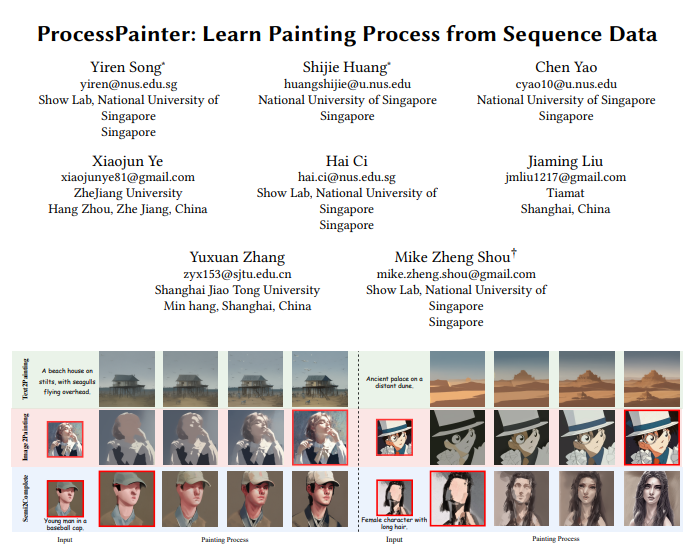Under the impetus of the digital wave, artificial intelligence (AI) is gradually permeating every corner of human life, and now it is revolutionizing the field of art. A research team from the National University of Singapore has developed an AI technology called ProcessPainter, which can learn and mimic the painting process of human artists, and even generate paintings from textual descriptions, completing unfinished artworks. This technological breakthrough not only provides new perspectives for art education and research but also brings endless possibilities for artistic creation.
Traditional painting processes are filled with personalized brushstrokes and styles, and ProcessPainter is designed to capture and reproduce this process. It first undergoes pre-training on synthetic data, then fine-tunes on the painting sequences of real artists, learning how to build a painting from the abstract to the concrete, from the macro to the details.

What's even more astonishing is that ProcessPainter can accept input from any frame, enabling precise control over the painting process. This means that whether given a half-finished piece or a completed one, it can continue the painting or reverse-engineer to recreate each step of the painting process.
Researchers have conducted a series of tests on ProcessPainter. The experimental results show that it exhibits outstanding capabilities in generating painting processes from textual descriptions, converting existing artworks into painting steps, and even completing half-finished paintings. The painting processes it generates are not only highly similar to those of human artists but also show a high degree of consistency in detail handling and overall style.
The application prospects of ProcessPainter are very broad. In the field of art education, it can serve as a teaching tool, allowing students to intuitively learn the painting techniques of masters and understand the deep logic of artistic creation. In the field of artistic creation, it provides artists with a new creative partner, helping them achieve bolder ideas and more refined works.
Although ProcessPainter still needs to improve its ability to handle higher resolutions or longer sequences, and obtaining data on the painting processes of human artists poses certain challenges, it has already shown us the infinite possibilities of combining AI with art. With the continuous development of technology, future AI will be able to better understand and mimic human creativity, co-creating more astonishing works with artists.
The research on ProcessPainter not only opens a window for us to understand the application of AI in the art field but also provides us with a new tool for artistic creation and education. The development of this technology will undoubtedly bring a profound transformation to the art world.
Paper link: https://arxiv.org/pdf/2406.06062










